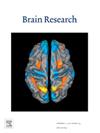通过基因表达和调控网络分析,深入研究糖尿病与缺血性中风之间复杂的病理生理机制。
IF 2.7
4区 医学
Q3 NEUROSCIENCES
引用次数: 0
摘要
本研究通过基因表达分析和调控网络调查探讨糖尿病与缺血性中风(IS)之间错综复杂的关系,以确定潜在的生物标记物和治疗靶点。利用基因表达总库(GEO)数据库中的数据集,对GSE43950(糖尿病)和GSE16561(IS)进行了差异基因分析,发现了重叠的差异表达基因(DEGs)。研究人员进行了功能富集分析、蛋白质-蛋白质相互作用(PPI)网络构建和中心基因鉴定,并在独立数据集(GSE156035 和 GSE58294)中进行了验证。分析发现了 307 个上调和 156 个下调的重叠 DEGs,这些 DEGs 在 GO 和 KEGG 通路中具有显著的富集性。通过 PPI 网络(257 个节点,456 个相互作用)确定了关键枢纽基因(TLR2、TLR4、HDAC1、ITGAM),并通过 GeneMANIA 分析强调了它们在免疫和炎症反应中的作用。基于 TRRUST 的转录因子富集分析揭示了涉及 RELA、SPI1、STAT3 和 SP1 的调控联系。差异表达分析证实,RELA 和 SPI1 在糖尿病中上调,而 SPI1、STAT3 和 SP1 则与 IS 有关。这些转录因子参与了免疫和炎症的调控,有助于深入了解糖尿病-IS并发症的分子机制。这种以生物信息学为驱动的方法使人们对相关基因的相互作用和通路有了新的认识,为潜在的治疗目标铺平了道路。本文章由计算机程序翻译,如有差异,请以英文原文为准。
In-depth investigation of the complex pathophysiological mechanisms between diabetes and ischemic stroke through gene expression and regulatory network analysis
This study explores the intricate relationship between diabetes and ischemic stroke (IS) through gene expression analysis and regulatory network investigation to identify potential biomarkers and therapeutic targets. Using datasets from the Gene Expression Omnibus (GEO) database, differential gene analysis was conducted on GSE43950 (diabetes) and GSE16561 (IS), revealing overlapping differentially expressed genes (DEGs). Functional enrichment analysis, Protein-Protein Interaction (PPI) network construction, and hub gene identification were performed, followed by validation in independent datasets (GSE156035 and GSE58294). The analysis identified 307 upregulated and 156 downregulated overlapping DEGs with significant enrichment in GO and KEGG pathways. Key hub genes (TLR2, TLR4, HDAC1, ITGAM) were identified through a PPI network (257 nodes, 456 interactions), with their roles in immune and inflammatory responses highlighted through GeneMANIA analysis. TRRUST-based transcription factor enrichment analysis revealed regulatory links involving RELA, SPI1, STAT3, and SP1. Differential expression analysis confirmed that RELA and SPI1 were upregulated in diabetes, while SPI1, STAT3, and SP1 were linked to IS. These transcription factors are involved in regulating immunity and inflammation, providing insights into the molecular mechanisms underlying diabetes-IS comorbidity. This bioinformatics-driven approach offers new understanding of the gene interactions and pathways involved, paving the way for potential therapeutic targets.
求助全文
通过发布文献求助,成功后即可免费获取论文全文。
去求助
来源期刊

Brain Research
医学-神经科学
CiteScore
5.90
自引率
3.40%
发文量
268
审稿时长
47 days
期刊介绍:
An international multidisciplinary journal devoted to fundamental research in the brain sciences.
Brain Research publishes papers reporting interdisciplinary investigations of nervous system structure and function that are of general interest to the international community of neuroscientists. As is evident from the journals name, its scope is broad, ranging from cellular and molecular studies through systems neuroscience, cognition and disease. Invited reviews are also published; suggestions for and inquiries about potential reviews are welcomed.
With the appearance of the final issue of the 2011 subscription, Vol. 67/1-2 (24 June 2011), Brain Research Reviews has ceased publication as a distinct journal separate from Brain Research. Review articles accepted for Brain Research are now published in that journal.
 求助内容:
求助内容: 应助结果提醒方式:
应助结果提醒方式:


